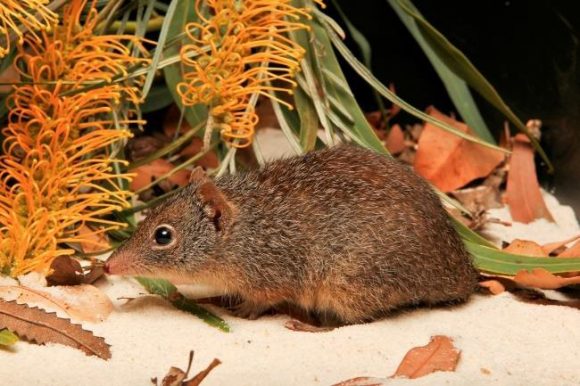Prior to the business meeting, the guest speaker for the evening was fellow member Michael Morcombe, whose topic was Pollination in an isolated region outlining the diverse and unique tactics by plants, insects, birds and mammals.
Michael explained briefly how he became interested in this field by explaining that he was asked to write a book in which pollination was a part,but couldn’t actually find anything on pollination in the southern hemisphere in the university library. This began a long and interesting journey recording just how plants are pollinated in Australia resulting in many long road trips for his family and a lifelong interest in photographing their finds for Irene.
We have a unique flora here in Western Australia,so Michael showed some wonderful slides, many taken by Irene, of how the plants use insects, birds and mammals to help them with their pollination. Plants have adapted to be insect-pollinated and many have long tubes which cover the insects in pollen. Insects can see ultra-violet light and so what looks like a plain flower to the human eye actually shows a pathway to the nectar through the insects’ eyes. Generally insects are attracted to blue/purple/white flowers while birds are attracted to red/yellow flowers.
Orchids are very clever and have evolved to play tricks on insects. Many have parts which mimic female wasps and the orchid will therefore attract the male wasp dabbing a spot of pollen on his tail. Flowers are very specific about using their pollen much like delivering letters.
Banksia flowers have evolved to attract birds and provide a perch, pollen and insects. The pollen goes on the bird’s face and head. The flowers are densely packed so that they are not attractive to insect pollination. The fascinating thing about flowers is that depending on what flower the bird is attracted to, depends on where the flower will deposit its pollen on the bird. Michael said it was entirely possible that a Dryandrawill deposit its pollen on the bird’s head while Anigozanthospollen will be deposited on a bird’s back. Other plants may deposit their pollen on the breast so that the bird can virtually carry different pollens all over its body from many different plants.
Mammals such as the Honey Possum with its long snout will pollinate flowers as well as Fairy Gliders and Dibblers (a native rat which was presumed extinct for 83 years until it was rediscovered in 1967).
http://www.michaelmorcombe.com.au/dibblerstory.html

